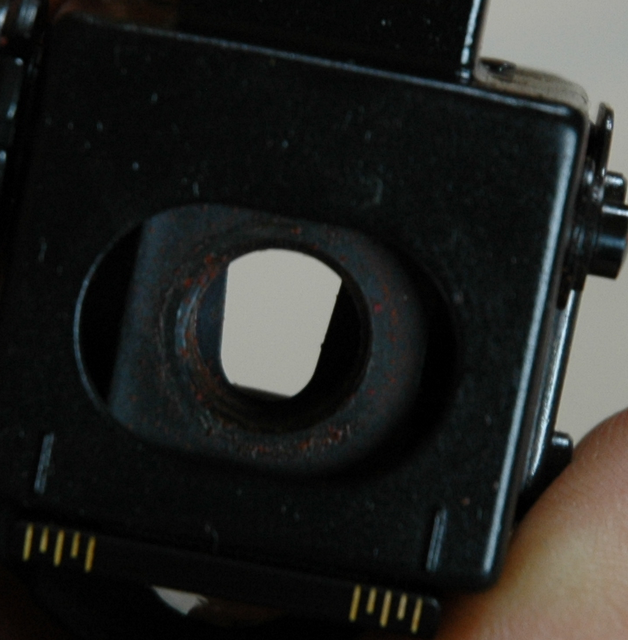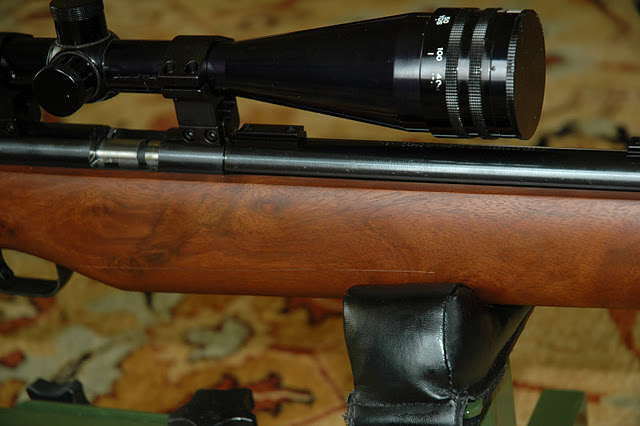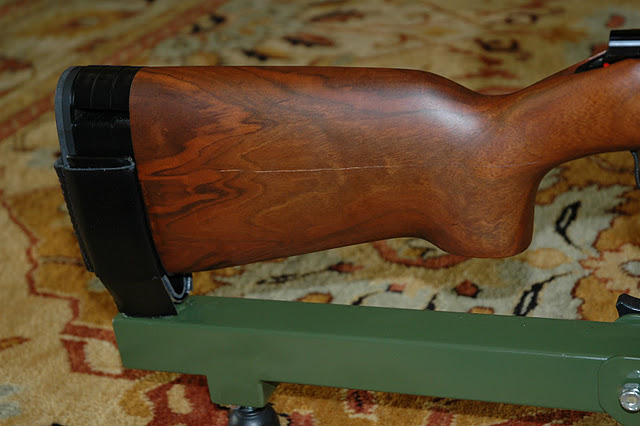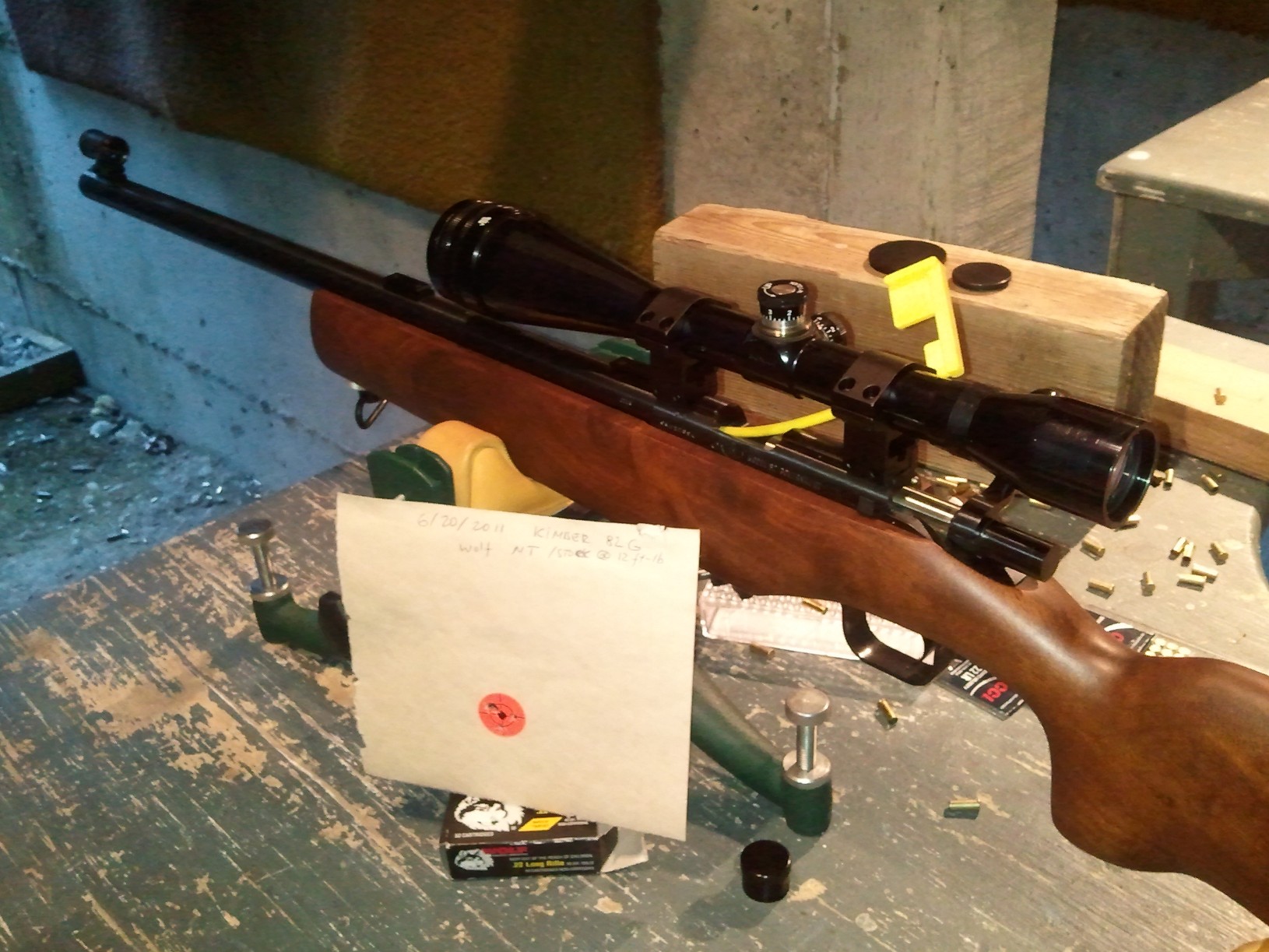Kimber 82 Government Review
Update 6/23/2013: CMP STILL has "rusty" Kimbers in stock, at only $425. This is easily the best deal on
a 22LR rifle. Here is the link.
The Civilian Marksmanship Program, a quasi-government organization set up to promote firearms
training among the US population is selling surplus military rifles.
The rimfire rifle of the day is Kimber 82G. 20000 of these were made in the late 80s
for the Army's marksmanship training. The ones on sale by CMP are
unused.
http://www.thecmp.org/Sales/22targetsurplus.htm
I've been eyeing these rifles for a long, long time. Target rimfire rifles (in fact,
target rifles of any kind) is a scarce - and dwindling - commodity. In fact, I
don't think anyone in the US makes target rimfire rifles any more - if you want
a new one, it has to be Anschutz, they are expensive and they are sold
through relatively vague channels - you definitely cannot just play with one at
a store. At least not at a store anywhere near Seattle.
Unfortunately, the requirements to buy rifles from CMP are quite onerous as well - you have to
have a "demonstrated" interest in shooting (C&R license works for this). You
have to be a member of the right club (http://clubs.odcmp.com/cgi-bin/clubSearch.cgi).
You have to have a proof of US citizenship. You have to send an application for
the purchase, signed and notarized (http://www.thecmp.org/orderinginfo.htm),
by snail-mail.
So a couple of months back I have finally collected all
the necessary documentation, joined the right club, and sent in the paperwork
for three "rusty" Kimbers. The consensus on the Internet was that the "rusty"
version is the way to go - the actual amount of rust is minor and in any case if
shows (if at all) in the places where it does not matter. So I figured I'd take
the risk and get 3 for the price of 2 regular ones.
It takes 45-90 days,
according to the CMP website, to get the rifle, and so it was in my case. They
ship them back FedEx next day, morning delivery, and email the day before,
so I waited for them to show up at home.
The very first thing that I
did that same morning was to check them for rust. The rust definitely was there.
The rifle came with match aperture sights, and that's where a lot of visible
rust was concentrated. Not one of the three sets of the sights was rust free.
The rusting was light - just tiny dots of bright red.

The photos overemphasize it, somehow, it looks much better in real life.

How the rust got there, given the fact that
the sights were in a sealed plastic bag, is completely beyond me.
All three bores had a few imperfections, mostly close to the chamber, but in one of
the three rifles it was roughly 1/3rd barrel length from the muzzle. I do not
have a boroscope, so I could not tell if these were rust spots or tool marks,
but the patches came out with not even a minor tinge of red, so I assume that
they were the tool marks. Other than these impefections, the bores were
mirror-bright.
The were much smaller specs of rust on the trigger
assembly and the receiver. All of them came off easily after being rubbed by a
patch soaked with Break-Free CLP, or drowned in the CLP bath. There were a
number of posts on the Internet forums about rust inside the bolt, so I took
apart mine. (The instructions on how to do it are here:
Kimber 82G Bolt Cleaning.pdf).
Two of the bolts had very minor amount of rust specs on the outside. One had
significant amount inside - to the point that rust has caked the gaps between
the strands of the spring. It was not deep, though, and all came off after an
overnight soaking in CLP and going-over with a patch.
The final imperfection was a shallow cut in the stock made when the rifles were opened for
inventory in the mid-90s. The pictures below show the damage, which was
approximately the same on all three rifles.


Other than that, the rifle looked perfect - blue, wood, everything was new.

On to the range. This is the result of
shooting CCI Green Tag, American Eagle, and Wolf Match Target today. Conditions
- light rain, calm. Shooting was at 50 yards, the orange dots are 1" in
diameter.

The results are as follows.
| Brand | Smallest Group | Largest Group | Average Group |
| CCI Green Tag | 0.312 | 0.788 | 0.588 |
| American Eagle | 0.404 | 0.840 | 0.525 |
| Wolf Match Target | 0.242 | 0.489 | 0.376 |
(*) The top middle group
shooting Wolf was 10 shots and was excluded from the sample. The other groups
were 5 shot groups. The 10-shot group measured 0.624".
While these results might look passable for a 10/22, for a proper target rifle they are
thoroughly unimpressive. Besides, I was really interested in shooting at a 100 yards, not 50.
The secret about shooting 22LR at 100 yards is that whatever the muzzle velocity is, the
ammo goes subsonic before it hits. So the accuracy is impaired because the sound wave catches
up and perturbs the bullet flight. Also, because it flies slowly and the bullet is light,
it is very sensitive to wind.
As a result, if your average group is 0.5 at 50, the 100 yard group will not
be 1.0 - it will be 1.5, maybe even 2.0.
Because of all these handicaps, shooting rimfire at 100 yards is considered to be a good,
cheap way to simulate shooting regular rifle and 600-1000 yards.
Of course when I took it out to a a hundred yards, the results were... simply atrocious.
I do not remember what the groups were, and I did not keep the target because it was so bad,
but I think the results were roughly equivalent to my CZ452. And this rifle is not supposed to be
in the same class as CZ452. CZ452 is a very accurate rifle, but it's a sporter, not a competition
target rifle. Kimber 82G, on the other hand, is.
Somewhat discouraged, I hit the Internet. After quite a bit of searching, I ran into a post that
talked about the sensitivity of these rifles to the torque of the action screws. So I first stepped
through a range of these using cheaper CCI Blazer ammo, and when I got the minimum group size,
I tried the selection of ammo below:
Here are the results, at 100 meters, roughly 10 groups of 5 shots each of every type of ammo,
except CCI which was 5 groups 5 shots each:
| Brand | Smallest Group | Largest Group | Average Group |
| Lapua Midas+ | 0.66 | 1.12 | 0.86 |
| Wolf Match Target | 0.60 | 2.27/1.22(*) | 0.95/0.8(*) |
| Federal Target | 0.59 | 1.21 | 0.99 |
| Federal Ultra Match | 0.40 | 0.98 | 0.69 |
| Tenex | 0.62 | 1.81 | 1.06 |
| CCI Standard Target | 0.25 | 1.79 | 0.87 |
(*)There was one outlier group at 2.27". The first number includes this group, the second one excludes it.


Kimber and Lapua ammunition (6/23/13 update)
Since Precise Shooter have become a Lapua distributor, I am literally swimming in Lapua ammunition
and components. So even though with all the new rifles to research I rarely come back to the old
Kimber - which although it shoots exceptionally well, I consider to be also well understood - I figured I have to shoot it again with
Lapua 22, since it is one of the best lineups of competition rimfire ammunition.
So out of the safe it comes, and we head to the range, along with a box of every type I have on hand. Which results in the following
target:

..and the statistics are here.

On average, we have to agree that Kimber really liked Lapua!
Interestingly, Polar Biathlon did the best, and has beaten the Federal Ultramatch from the earlier experiment - by a hairline, as it happens,
because of a flier in the last group. Polar Biathlon has not historically shot well in any other of my rifles, I like that it works for Kimber
because I have quite a few blocks of it on hand.
Also interestingly, there was not a statistically significant difference between Midas+ ($18/box) and X-Act ($30/box), which I guess is a
good news to budget shooters everywhere!
Kimber resources